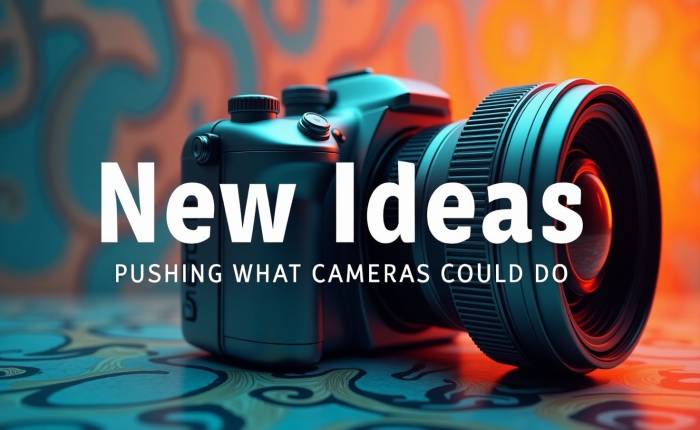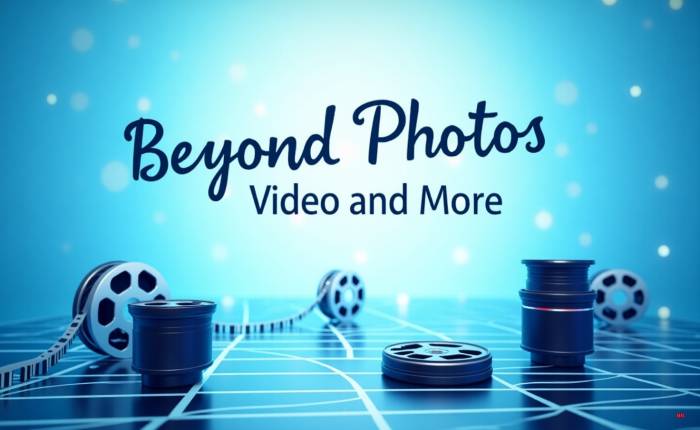Remember when good photos meant big cameras and waiting for film? That feels so long ago! Then came a big change in digital cameras, led by Cybershot. It wasn’t just another camera. It changed what small cameras could do. It made photography easy for everyone. As someone who’s watched cameras grow for over 15 years, I saw how Cybershot truly changed things.
The Start of Digital: Getting Ready for the Cybershot
Before Cybershot, digital cameras were big, costly, and didn’t take pictures as well as film cameras. We mostly saw them as special toys, not something to replace our film cameras. But things were changing for digital. New ways to make sensors and store data were coming.
People wanted to see their photos right away. They didn’t want to wait for film. Sony, a leader in electronics, saw this need. They started to work hard to make digital photos for everyone. Everything was set for a camera that mixed new tech with easy use. This opened the way for the Cybershot.
| Feature | Old Film Cameras | Early Cybershot Cameras |
| Picture Count | 24-36 on film | Hundreds on memory |
| See Pictures | After developing | Right away on screen |
| Cost per Photo | Film + work | Very little (after buying camera) |
| Share Photos | Print pictures | Digital files (on computer) |
A Legend Begins: The First Cybershot Cameras
This was more than a camera; it was a big step. It was small. It had a lens that turned for different shots (even early selfies!). For me, someone tired of waiting days for film, seeing photos instantly was amazing.
The DSC-F1 was great, even with its small 0.3-megapixel sensor. It truly made digital photos for everyone. It moved photo taking from labs to people’s pockets. Seeing your photos instantly and deleting bad ones without wasting film was a huge change. It changed how we took pictures forever.
New Ideas: Pushing What Cameras Could Do

The Cybershot line kept getting better. It always pushed what a small camera could do. Sony quickly put in better sensors, zoom lenses, and smart image helpers like BIONZ. This meant clearer photos, better low-light shots, and brighter colors. This made the Cybershot a strong rival to old film cameras.
One big step was using Carl Zeiss lenses in many it models. This showed Sony cared about good lenses. Features like Super SteadyShot also became common. This helped stop blurry photos from shaky hands. It gave us clearer pictures even in tough spots.
Small Design: The Pocket Revolution
Beyond tech, the Cybershot was great in design. It was made to be easy to carry. Being so small made taking digital photos easy and fun. You always had it with you.
Their sleek looks and bright colors also made them popular. They became cool things to have. The idea was simple: the best camera is the one you have with you. This design idea was key to their wide use.
Easy to Use: Photos for Everyone
The Cybershot wasn’t just for tech fans; it was for everyone. Simple menus, automatic settings, and features like “Smile Shutter” (which took a photo when it saw a smile) made taking pictures super easy. This ease took away the fear many felt with complex cameras.
Being simple to use, plus seeing photos instantly, made people try new things. It made photography a fun hobby for millions. I remember telling friends and family who feared “real cameras” to get Cybershot models. They loved how easily they could capture memories.
| Feature Type | Early Cybershot | Later, Cybershot. |
| Easy Use | Auto modes, simple screen | Smart auto, scene picks, smile, face detect |
| Picture Quality | Low MP sensors, basic work | Better sensors, BIONZ, Zeiss lenses |
| Connect | USB to PC | Wi-Fi, NFC, phone apps |
| Special Modes | Basic video | Panorama, effects, video, 4K |
More Pixels: A Numbers Game
As sensors got better, Sony kept bringing out cameras with more megapixels. This meant bigger prints and more room to crop. This was a main selling point and drew many buyers.
More megapixels weren’t the only thing for good pictures, but their growing numbers in it cameras made people want them. It was a clear sign of progress. It added to how valuable each new it felt. This made digital photography an exciting, always-changing field.
Beyond Photos: Video and More

Cybershot cameras didn’t just take still photos. As tech improved, they added better video recording. From basic video to high-definition and even 4K in later models, the Cybershot became a useful tool for both photos and movies.
Adding video made the it even more of an all-in-one device. Features like zoom while filming and image steadying also made home videos better. They looked more like movies and were nicer to watch. The Cybershot was truly a strong multimedia machine.
Connect and Share: The Digital World
One of the biggest impacts of the Cybershot was its role in starting the age of instant sharing. Early models needed a USB cable to move photos to a computer. But later ones had Wi-Fi and NFC built in. This lets people share pictures straight to phones, social media, and online.
Being able to connect changed photography from a private act to a shared one. Photos could go online instantly. Friends and family could see them. This started a new way of talking with pictures. The Cybershot was key in making digital photos a big part of our online lives.
Market Leader and Rivals
For a long time, the Cybershot line was the top seller in small digital cameras. Its mix of new ideas, design, and easy use set a high standard for others. But this success also brought strong competition from other camera makers. This led to a great time for small digital cameras.
This rivalry pushed more new ideas. Brands fought for buyers with new features and better performance. The it stayed strong. It kept up with market changes and kept its loyal fans. This was thanks to its solid performance and well-known name.
Smartphones Arrive: A New Challenge
Smartphones coming out caused a big problem for small camera makers, including Cybershot. Smartphones, always connected and with cameras, started to take away what made point-and-shoots special. The ease of a phone for quick snaps was just too strong.
Sony, though, changed. While some basic it sales fell, the company focused on better small cameras like the RX series. These top-tier it cameras had bigger sensors and advanced features that phones couldn’t match yet. They were for people who wanted really good photos.
The Cybershot’s Story: Ideas Keep Coming
Even with market changes, the Cybershot‘s impact is deep. It made digital photography for everyone. It made it fun. Its first features, like LCD screens and optical zoom in small bodies, set the rules for the whole industry.
Today, while the market for simple point-and-shoot cameras is smaller, the drive for new ideas from it lives on in Sony’s advanced small and mirrorless cameras. The goal of smaller, stronger, and more connected cameras continues.
Cybershot Today: Still Excellent
The main small camera market is now mostly phones. But the Cybershot name still shines in special areas. Sony’s RX series, for example, offers great small cameras. They have large sensors, advanced lenses, and pro-level features. These cameras are for serious photographers who want great pictures and control in a small size.
The Cybershot name now means a focus on pushing small camera tech limits. It offers things like fast shooting, smart focus, and great low-light performance. In the constantly evolving field of photography, this expansion maintains the Cybershot name’s significance and respectability.
Conclusion
The Sony Cybershot truly changed small photography forever. It made digital photos for everyone. Its constant new ideas in features and design helped millions take and share their world easily and well. Its impact is still felt today. It holds its place as a key brand in photo history.
FAQs
Is the Cybershot good for travel photography?
Indeed, the Cybershot is compact and lightweight, which makes it perfect for travel. It captures wide scenes and fine details with ease.
How does Cybershot’s zoom work?
Cybershot cameras use optical zoom to get closer to subjects without losing clarity. It’s better than digital zoom on phones.
Which Cybershot model is best for beginners?
The Sony Cybershot DSC-W800 is great for beginners. It’s simple, budget-friendly, and takes crisp, clear photos.
This blog post talks about how the Sony Cybershot changed small photography so much. As someone who has watched camera tech for years, I wanted to show how it made photography easy and quick for everyone. It truly changed how we take and share life’s moments.








